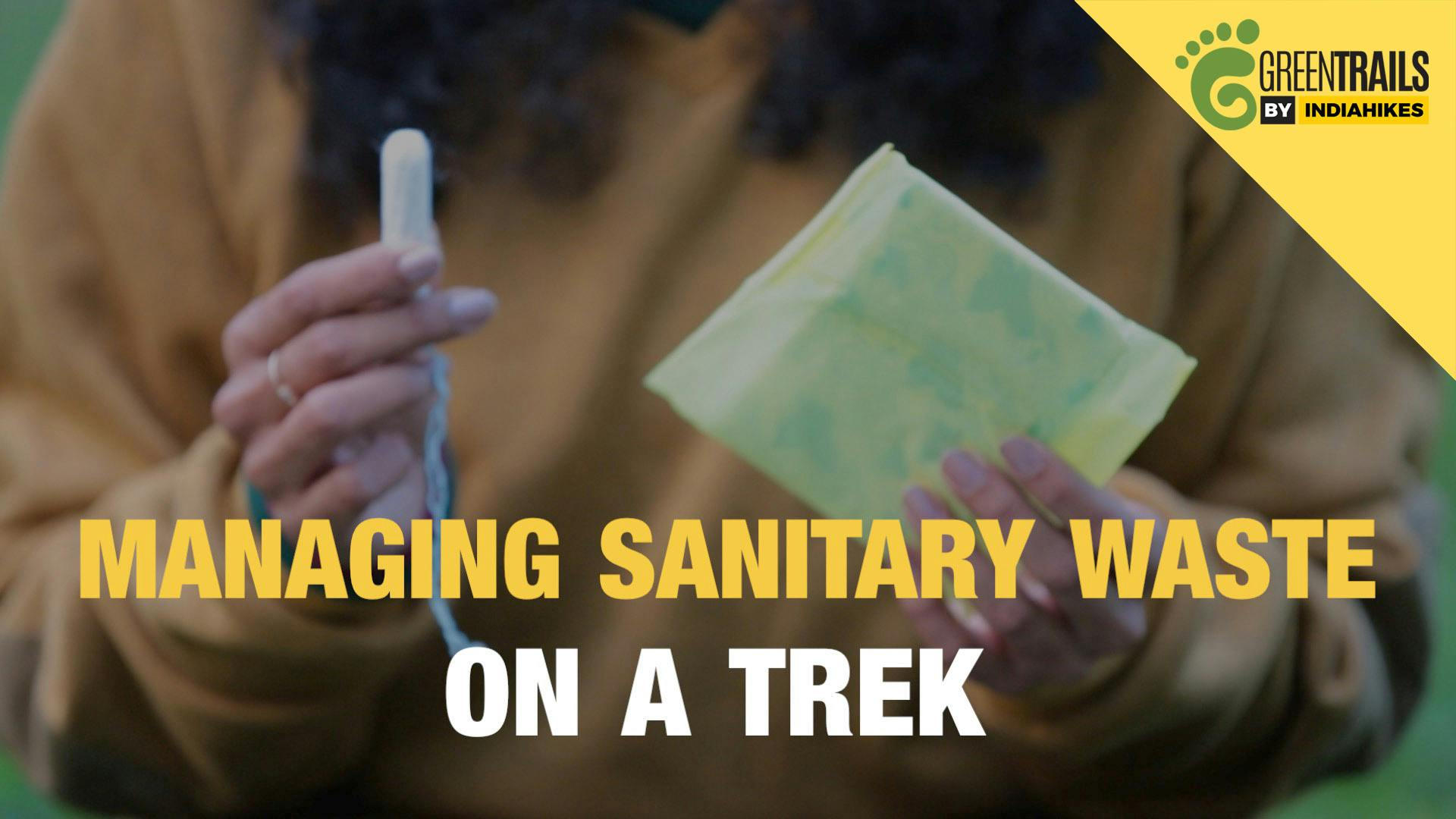How To Manage Sanitary Waste On A Trek
Share this story
How To Manage Sanitary Waste On A Trek
Category Sustainability Resources Green Trails
By Tamanna Tamang
2019-07-29
Trekking during periods is not a bad idea, if you know how to manage your waste properly.
Sanitary waste is largely non-biodegradable, and poses a serious threat to the mountain environment. We’ve noticed that many people are not aware of the harmful impact of disposing single-use sanitary products in the mountains.
In this article, we show you how to handle your sanitary waste on a trek.
Let’s get right into it.
Why you should not dispose of sanitary waste in the mountains
While on a trek, if you use single-use sanitary products like pads or tampons, the best thing to do is bring them back down to the cities for disposal. Leaving them in the mountains is detrimental to the delicate balance of the ecosystem. Here’s why.
1. Sanitary waste takes longer to decompose in mountains
Single-use sanitary products are harmful to the environment. In the cities, these go to the landfill where they stay for about 500 to 800 years before they finally decompose. In the mountains, this decomposition process is even slower becasue of lower temperature.
Though there are biodegradable sanitary pads as well, the cotton used for these pads are bleached and processed extensively. They require 1-2 years to decompose in the cities where the temperature is favorable. So, even if your sanitary product is biodegradable, it’s harming the mountain environment.
2. It attracts wild animals
Since these pads and tampons have blood remains, they attract wild animals. They dig up the litter from pits, even if you have buried them. This causes open littering and an unhygienic environment.
3. It pollutes water sources
Streams in the mountains flow to settlements downstream. So if you are littering in the open, it can reach these water sources by way of the wind, or perhaps animals. This will pollute the water resources of the villagers.
Considering these issues, we insist that our trekkers bring down their sanitary waste to cities where it can be disposed of properly.
Here’s the procedure we recommend.
How to manage your sanitary waste
If you are someone who uses sanitary napkins or tampons, you need to follow this procedure to bring your waste back down from the mountains. Follow these steps below:
1. Carry these three things in your backpack
a) Ready-to-use paper strips
Cut newspaper into pieces of required size. You can use these to wrap your pads or tampons. Cutting them into strips beforehand will be easier to use while on your trek, as opposed to carrying full newspapers. The strips will be handy and occupy less space in your backpack.
b) Ziplock bag
These are to pack your waste. Ziplock bags are better than any other regular bags as they are airtight. This traps the smell of your used products.
The size of your ziplock can vary as per your requirement. If you are someone whose flow during periods is heavy, you might need a bag that is big in size.
c) A pouch
Make sure that you carry one big pouch to store all the ziplock bags or undergarments.
You can choose a size based on your needs. If you are someone who changes undergarments every time you change napkins, you might require a bigger pouch. It also depends on how many pads you will be using during the entire trek.
It will be great if your pouch is washable and lightweight , something like a cloth bag with a zip. It can be used again after cleaning once you are back to the city. Keep the weight of the pouch as small as possible to avoid cluttering your backpack.
2. Wrap, pack, and take
Once you reach your campsite, you can change napkins in the toilet tent.
After use, wrap your napkin in a strip of paper. Roll the pad tightly.
Pack the wrapped napkin or tampon in a ziplock bag. Make sure you have enough space in your zip lock bag to adjust all the pads you are going to use on the entire trek.
Take the used napkins back to the city for proper disposal. Leaving even a single pad or tampon in the mountains is not good for its ecosystem.
A note on menstrual cups
We highly recommend switching to menstrual cups all year-round. They are very eco-friendly and comfortable to use once you get used to it.
Using menstrual cups while trekking has many advantages too. You can use the cup for straight 8-10 hrs. And you have less chance of getting rashes or infections too.
I suggest you read this article for more insight about menstrual cups while trekking.
We at Indiahikes, have switched to the menstrual cup for good. It’s a great way to avoid inorganic waste. We hope for a day when everyone who goes to the mountains switches to the cup for the sake of preserving nature.
Till then, remember to manage your sanitary waste and bring it back to the cities for easy disposal.
I’m eager to listen to your thoughts and suggestions on this topic. If you follow any other method in managing your sanitary waste, do drop in your comments below!
Upcoming Treks
Related Videos
""
Sign up for our much loved Weekly Mailer
We have terrific trekking tips, trek updates and trek talks to look forward to

